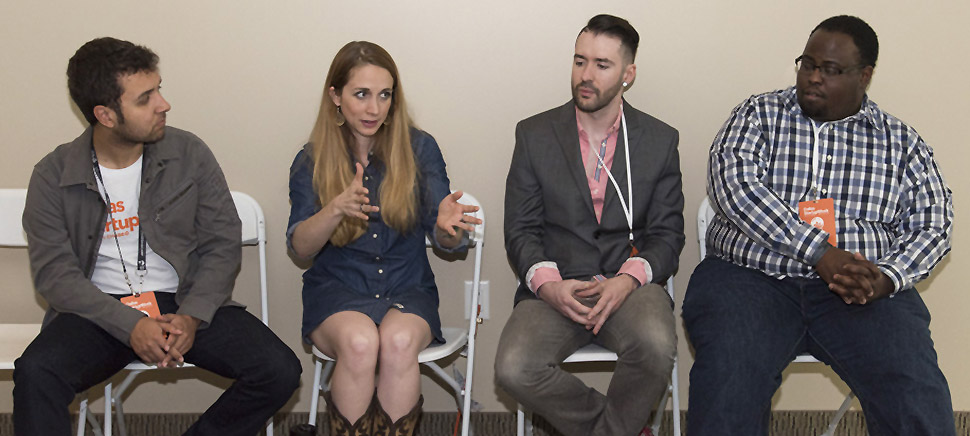HERE’S HOW TO TILT THE ODDS IN YOUR FAVOR
Crowdfunding is a risky roll of the dice for any startup, including video game creators.
If they reach their goal, they’ve got funding to continue pursuing their dream but also have infinitely more pressure to be successful. And, having a successful “kickstart” costs money in itself, because donors expect something in return.
If they fall short of the goal, they get no money and are back to square one.
But there are things companies can do to tilt the odds in their favor before, during and after crowdfunding. Three entrepreneurs with experience in crowdfunding talked about what worked, what didn’t and gave tips on having a successful campaign.
Crowdfunding can catapult your company ahead
For many, it’s worth the risk because it legitimizes your product and catapults it faster than waiting around to get in front of a publisher.
“If you want people to see your project, you want a Kickstarter,” said Karsten Davis, founder of Last Minute Games. “You can tap into your personal network but at the end of the day you’re going to need a lot of people to buy in.”
“If you want people to see your project, you want a Kickstarter.”
– Karsten Davis
The first thing is to set a realistic goal and consider setting a stretch goal. People who contribute to your campaign will expect a perk, reward or giveaway in return.
It can be T-shirts, collectibles, an advanced copy of the game or early access to it if it’s digital.
Don’t detract from your primary product
Davis focuses most of his resources on his product, a physical card game. He doesn’t want to detract attention away from his primary product, the game.
Jim Welch, CEO of Kinskii, did it all: T-shirts, figurines, a soundtrack and other goodies.
“We needed rewards to create something for people to pledge,” Welch said.
He’s had a Kickstarter fail before because the game itself was free, though there are micro transactions within the game itself.
Marketing before the campaign starts is critically important.
Go after your targeted market
Welch targeted mommy bloggers because the mothers were the target market.
“We figured those people have the reach where our target market is,” Welch said. “You have to pay them to get a blog on your product.”
Many of the blogs didn’t appear in time to get the reach needed to generate the buzz for our company beforehand, though. It’s also smart to do a blanket rollout all at once.
“The takeaway was that we should have done it sooner.”
– Jim Welch
“The takeaway was that we should have done it sooner,” Welch said.
The panel also addressed when the best time to have a Kickstarter campaign. The rule of thumb is to never do it at Christmas time, because that’s when all the hot brands do it and you’ll get lost in the noise, Davis said.
The summer also gets crowded.
Watch the crowdfunding on the first day
Once the campaign begins, watch the funding on the first day. Typically, campaigns get the majority of their money in the first few days when the company is featured at the top of the Kickstarter website and the buzz is the highest.
Even successful campaigns will notice a dramatic drop in funding after the initial boom. Companies that meet their goal will get the funds dropped into an account with 7 to 10 days. They will not know who donated and who didn’t.
Ashton Kennedy, co-founder of Converse VR, makes movies and has set a goal to make a virtual reality film. She creates a storyboard or trailer for the next big idea and sets a low goal, just enough to get the project off the ground.
“It’s allowed me to make a lot of different films and built my work repertoire up,” Kennedy said. “With the film, they want to see it get made. They know the story, and it’s a story they want to see told.”
For a daily dose of what’s new and next in Dallas-Fort Worth innovation, subscribe to our Dallas Innovates e-newsletter.




































































